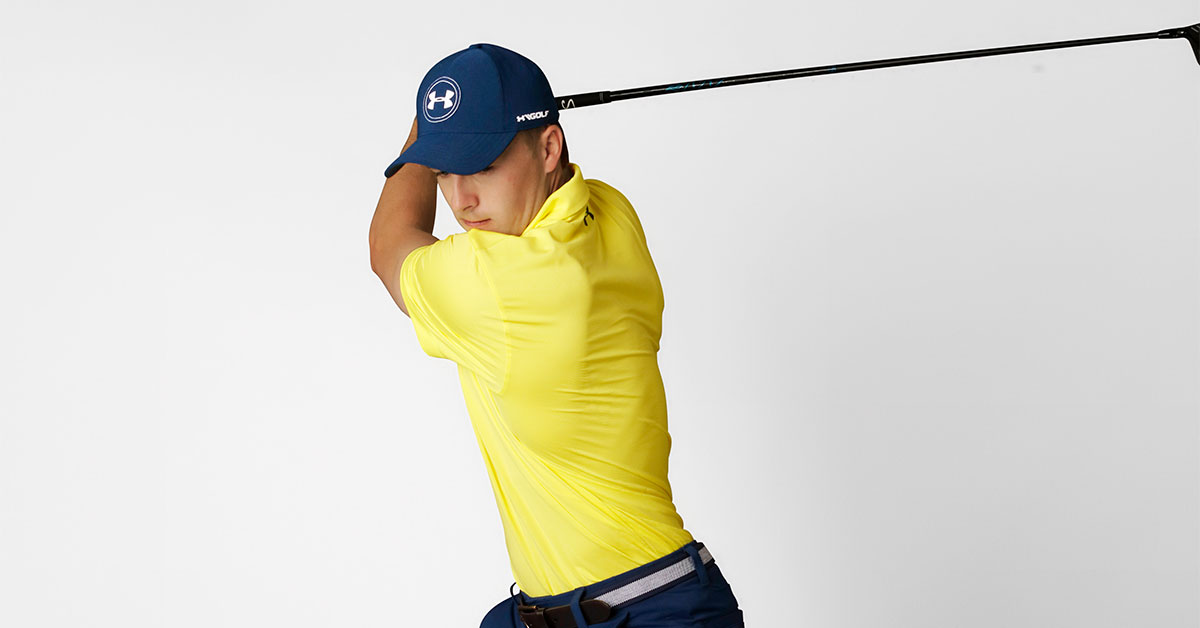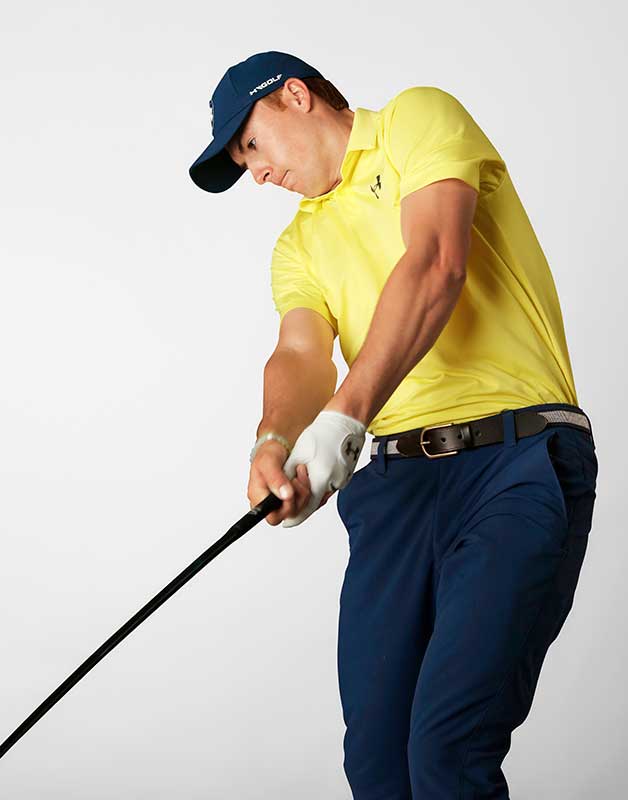How to drive it in the fairway again and again.
You’re driving it great, scoring well, then somewhere in the middle of the back nine you spray a couple of tee shots. That’s all it takes to ruin a round. Were they mental errors from getting tight or nervous? Only you know the answer. More likely your body just got a little tired. That’s when every golfer’s undesirable tendencies come out, mine included. Knowing this, I perform nearly all of my physical-training exercises from a golf stance. Having the strength in your legs and core to maintain posture throughout the swing is important with every club, but absolutely critical with the driver. It has the longest shaft, and you swing it the fastest, so even small misses can travel 30 yards off line.
In this article, I’ll explain my bad tendencies and the swing thoughts I use to avoid them. Additionally, to be a great driver, it’s important to swing within yourself. It’s easy for players on tour to know when they’re getting jumpy, because there are more and more launch monitors on tournament tees nowadays – and you can’t help but look. My driver swing speed is 115 miles per hour, which gets me 293 yards of carry. I can swing harder, but then I can lose control. Carrying the ball 300, but into trouble, isn’t worth much. I don’t offer this to brag – there are plenty of guys on tour who bomb it way past me – but I think all golfers, especially amateurs, suffer now and then from chasing those extra couple of miles per hour of swing speed.
And, as any success I’ve had has demonstrated, consistently driving the ball in play is a weapon all it’s own. Here’s how to do it.

in this photo.’ – Jordan Spieth
Lead With The Hip
If I get a little tired, my right hip slides away from the target on the takeaway, then buckles. The ideal position is above. My right hip is pivoting – not swaying – so my backswing feels like my upper body turns over my lower body. You can tell I’ve made a deep shoulder turn, because you can’t see my right arm. That’s the directive from my coach, Cameron McCormick: “Hide the right arm, Jordan.” But I don’t think about that arm or my upper body during the backswing. Instead, if I can feel my right hip and glutes activated (you’ve probably heard Tiger talk about this; it’s truly a useful concept), I know my upper body will follow and find the right position at the top of the swing.
 Tilt The Shoulders
Tilt The Shoulders
From this perspective [left], you can see how my right hip really turns behind and away. As I emphasised, this move with the lower body is the trigger to my backswing. But another point worth mentioning is that you can see my left shoulder is lower than my right. An image that sometimes pops into my head for the top of the swing is, if my shoulders were the wings of an aeroplane, the left wing would be angled down and the right wing up. And with my chest turned completely away from the target, I’ve created a lot of space to swing down and attack the ball from inside the target line and hit up on it. This path will produce the high, drawing ball flight I prefer.
Wing Down
If you’re watching a tournament and see me miss a tee shot way right, it’s likely my right shoulder lifted in the downswing. When  that happens, the club comes down steep and to the left, which is the classic over-the-top move that makes the ball peel off to the right. Returning to the aeroplane-wing metaphor I used for the top of the backswing, a great thought for the transition is an early change in wing positions. To start the downswing, let that right aeroplane wing (your back shoulder) angle down towards the ball as the left shoulder moves up. As you see [right], my right shoulder is way lower than my left, which promotes the clubhead to travel on a shallow, inside path. Again, that’s the recipe for a draw.
that happens, the club comes down steep and to the left, which is the classic over-the-top move that makes the ball peel off to the right. Returning to the aeroplane-wing metaphor I used for the top of the backswing, a great thought for the transition is an early change in wing positions. To start the downswing, let that right aeroplane wing (your back shoulder) angle down towards the ball as the left shoulder moves up. As you see [right], my right shoulder is way lower than my left, which promotes the clubhead to travel on a shallow, inside path. Again, that’s the recipe for a draw.
Follow The Flight
Remember when I said it’s all about keeping your posture? The finish position is the big reveal. If I don’t hold my finish – poised and still like a figurine atop a trophy – I know it was a sloppy swing. The slightest wobble means I got lazy or swung too hard. I love the image below. My right shoulder and belt buckle are pointing at the target, which indicates a full and committed follow-through. And you can tell from my eyes that I’m following the shot. A great habit is to hold your finish until the ball lands. If it’s difficult to stay in balance for these few seconds, you’ve got work to do on your core strength. But if your ball is tracking centre cut, admire it for a moment. OK, that’s long enough. Now pick up your tee.

too hard or got lazy.’ – Jordan Spieth
– Jordan Spieth spoke with Max Adler




